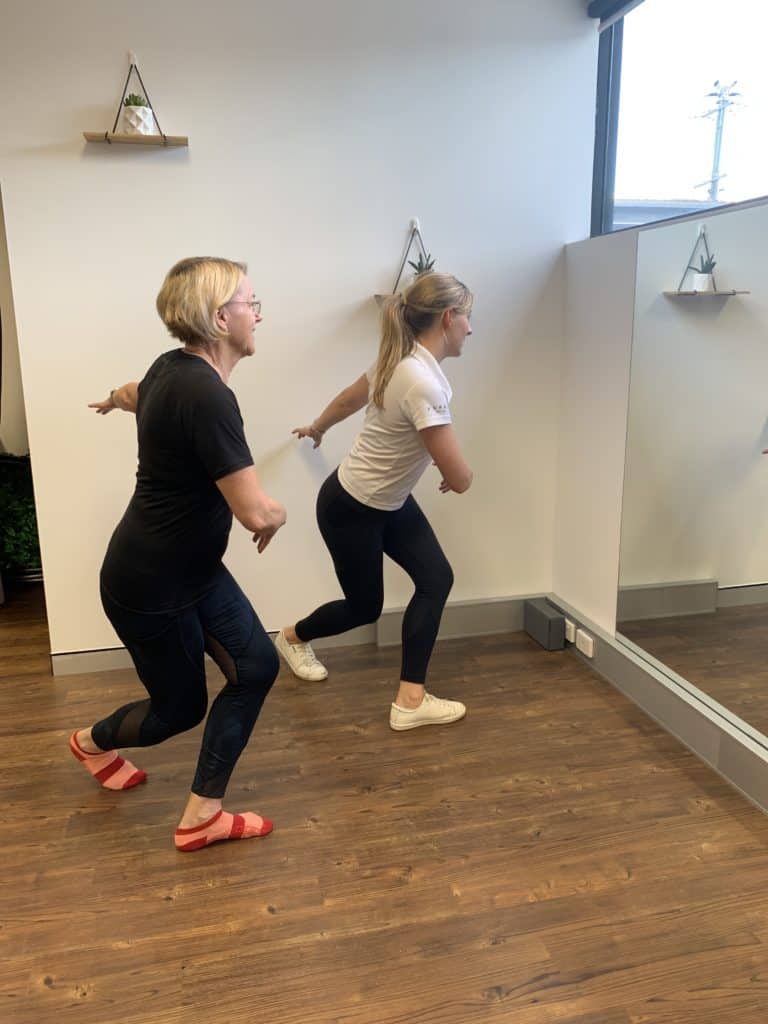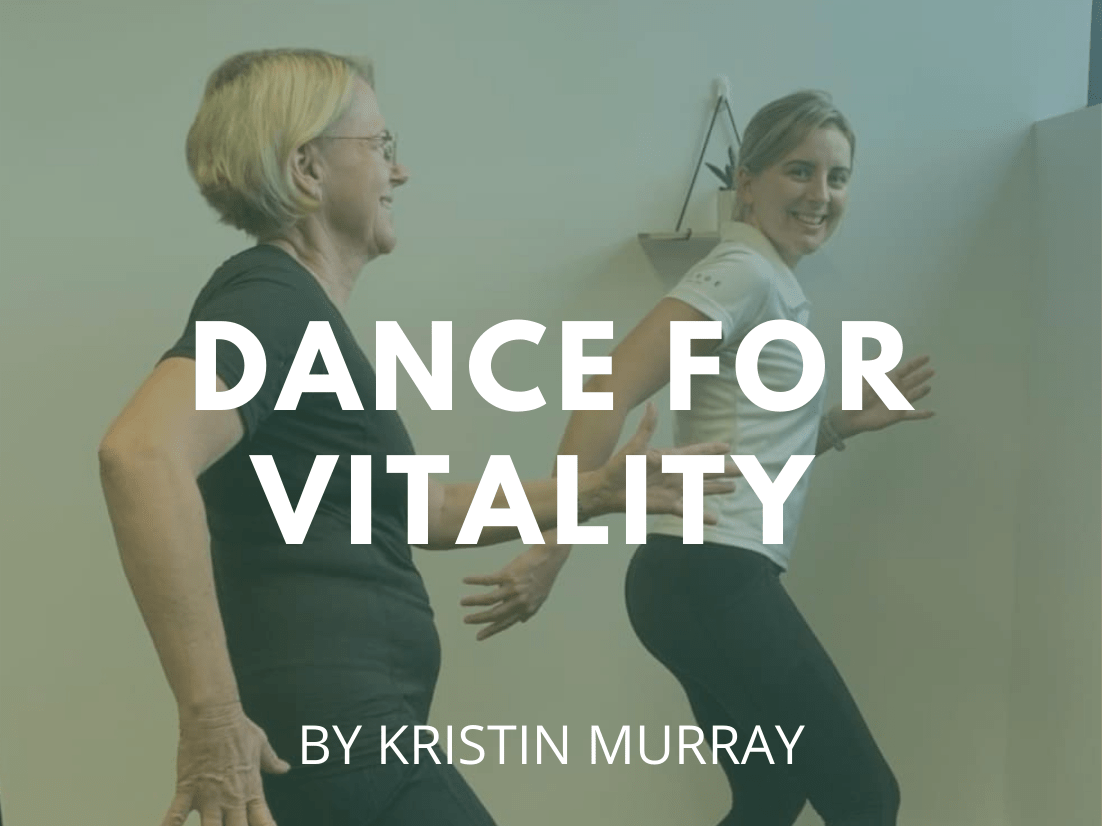Dance for Vitality
Dance Classes Guided by an Accredited Exercise Physiologist
“Movement is a Medicine for creating change in a person’s physical, emotional and mental states.” Carol Welch
WHY DANCE FOR VITALITY?
Research in dancing for aging populations has shown evidence
for the below:
- Increased mobility
- Increased confidence through movement
- Improvements in balance and coordination + falls prevention
- Strength development
- Brings people together!
WHAT HAPPENS IN A CLASS?
Each class goes for one hour. The first 10 minutes are spent ensuring everyone knows a little bit about one another and warming up the body. Then we learn the dances – Some dances are predominantly lower body, some upper body and sometimes we use chairs and props. Each week we build on the dances – dances are taught slowly and the focus is on creating good movement patterns too! Sometimes a good beat is the best distraction – because after all – Dancing is Exercise in Disguise!

WHAT TYPE OF DANCING?
All varieties! Some pieces we dance to are fluid, some are fast and strong, some are greek, latin, balletic, street, line and many more.
WHAT IS AN ACCREDITED EXERCISE PHYSIOLOGIST (AEP)?
Accredited Exercise Physiologists are university qualified allied health professionals equipped with the knowledge, skills and competencies to design, deliver and evaluate safe and effective exercise interventions for people with acute, sub-acture or chronic medical conditions, injuries or disabilities.
Pathology domains covered by the services of AEPs include cardiovascular, metabolic, neurological, musculoskeletal, cancers, kidney, respiratory/pulmonary and mental health. As well as any other conditions for which there is evidence that exercise can improve the client’s clinical status. (ESSA, 2020).
WHY DANCE WITH AN EXERCISE PHYSIOLOGIST?
AEP’s have additional knowledge of human physiology and can adjust your movements (and the dances) to assist you and make movement more safe and effective!

WHO CAN ATTEND?
The classes are OPEN TO ALL ages & encouraging those with:
- Mobility issues
- Neurological conditions
- Difficulties with balance
- For Mental Health
- For those who love music and moving their body and those who want to start moving their body more
WHAT THE RESEARCH SAYS: DANCING FOR NEUROLOGICAL CONDITIONS – the evidence:
A review article looking at the ‘Therapeutic dancing for Parkinson’s Disease’ found that dancing can be a beneficial form of exercise for people with mild to moderately severe PD. As well as being a highly social and engaging physical activity, it has the potential to increase body awareness, wellbeing, and movement control. Studies showed that dancing also had beneficial effects on walking, freezing of gait and health related quality of life. Hu, G., 2016. Editorial Comment on “Therapeutic Dancing for Parkinson’s Disease”. International Journal of Gerontology, 10(2), p.63.
DANCING FOR FALLS PREVENTION – the evidence:
One study was conducted to analyse the effect of dance-based aerobic exercise in rate of falls in older women. In the study, participants completed dance based aerobic classes 3 times per week for 60 minutes for 12 weeks. The results after showed that women who participated in dancing group compared to control group showed improvements in Single Leg Standing balance, functional reach and walking time around cones, suggesting that dancing may improve balance, locomotion and agility and therefore attenuate risk of falls. Shigematsu, R., 2002. Dance-based aerobic exercise may improve indices of falling risk in older women. Age and Ageing, 31(4), pp.261-266.
Comments are closed.

